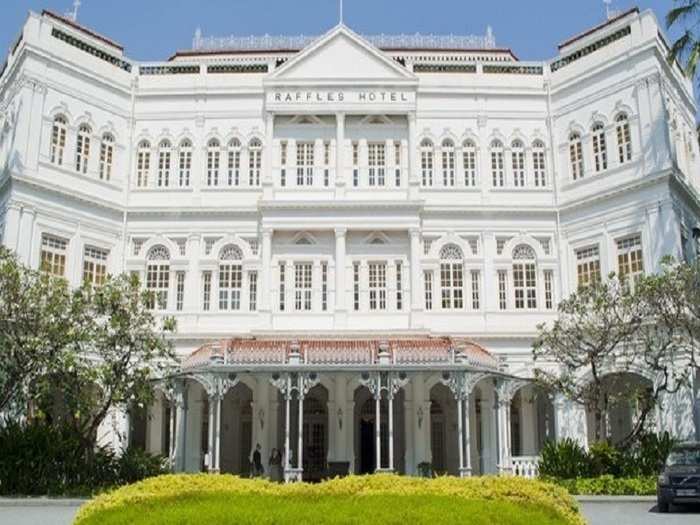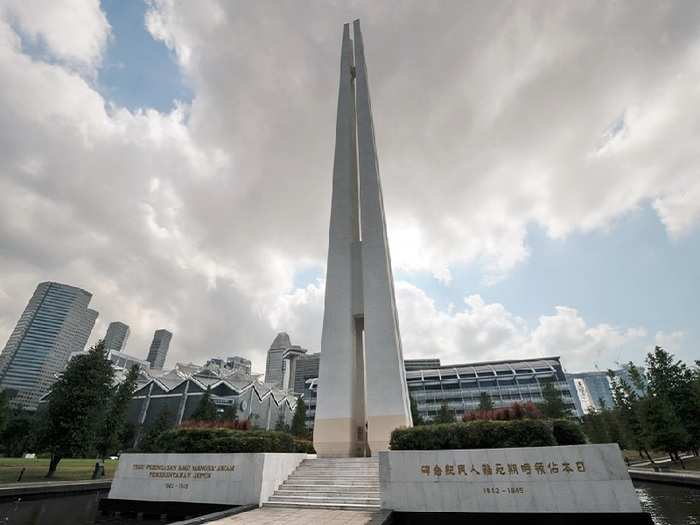7 things you just cannot miss out on if you are an Indian travelling to Singapore
Marina Bay Sands

3. Raffles Hotel

Dating back to 1887, Raffles Hotel is both a monument and an institution to many around the world. One of Singapore's most distinctive colonial-era buildings, it was built by the famous Armenian businessmen, the Sarkies brothers, and is regarded as the birthplace of the world-famous Singapore Sling cocktail. Designed by architect Regent Alfred John Bidwell of Swan and Maclaren, the main building of Raffles Hotel was completed in 1899. It survived the war and was declared a national monument in 1987.
4. Changi Airport air traffic control tower

To many Singaporeans, the 80m-high air traffic control tower in front of Singapore Changi Airport represents 'home' in a way that no other building does. The airport project was spearheaded and led by the then-Chairman of the Port of Singapore Authority Howe Yoon Chong, and involved a massive land reclamation initiative on Singapore's eastern tip. And it is on this reclaimed land that the landmark tower, once called "Airtropolis", now sits. The tower began operations with the first flight in 1981 and has since become synonymous with the award-winning Changi Airport. Today, it handles communications with up to 900 flights a day.
5. Haw Par Villa

It was built in 1937 by business magnate Aw Boon Haw, the 'Tiger Balm King', as part of a lavish abode for his younger brother, Aw Boon Par. The sprawling gardens surrounding the mansion were developed as an entertainment park to illustrate vignettes of Chinese mythology. Today, the gardens remain, but the magnificent mansion that once stood atop this hill has since been destroyed, having been bombed by the Japanese in the 1940s. Even so, the colourful Haw Par Villa continues to captivate. What lies within continues to intrigue — more than 1,000 statues and 150 dioramas based on famous Chinese historical personalities, mythology and folklore are distributed throughout the park.
6. Lau Pa Sat

Lau Pa Sat, known as the Telok Ayer Market until 1991, was first established in 1825, when it served as the country's first humble wet market. Its distinctive octagonal design was conceptualised and added to the space by Irish architect George Drumgoole Coleman in 1836. This unique shape has endured despite several reconstructions. Remnants of the exquisite Victorian-era craftsmanship can still be seen in its archways, eaves and the intricate filigree patterns incorporated into the design. In 1973, the market was converted into a hawker centre and was gazetted a national monument. In 1986, it was reconstructed once more and took the shape of the bustling food court it is today that draws both tourists and locals.
7. Pinnacle@Duxton

Pinnacle@Duxton is possibly one of Singapore's most distinctive public housing projects and has redefined the city's skyline. The development's blocks are connected by two skybridges and boast two of the world's longest sky gardens. These span 500m each and sit on the 26th and 50th floors, offering panoramic views of Singapore.
8. Civilian War Memorial

Singapore's Civilian War Memorial along Beach Road was built in 1967 in memory of the civilians massacred during the Japanese Occupation of Singapore from 1942 to 1945. Remains of victims found in other parts of Singapore, including Siglap, Bukit Timah and Changi, were gathered and buried under the memorial.
Popular Right Now
Popular Keywords
Advertisement